
Not long ago I did a post of doors in Kristiansand (Norway). This weekend has been one of those windy, rainy ones which means you stay inside. I have spend time sorting out photos, saving to external hard drive. Doing that I realized I have a lot of photos of doors, taken in different places around the world. It's weird when I look at them. I hadn't thought about doors being something I always take pictures of, but I actually have a lot. This is only a small selection. I don't really know what facinates me about doors, but I think if you tak the time to look at them, it can tell something about the owner. This selection shows different doors. Some are old. Others are made of gold. Some are simple in design and others are detailed and elaborate. But they all tell something about the place and culture where they belong.
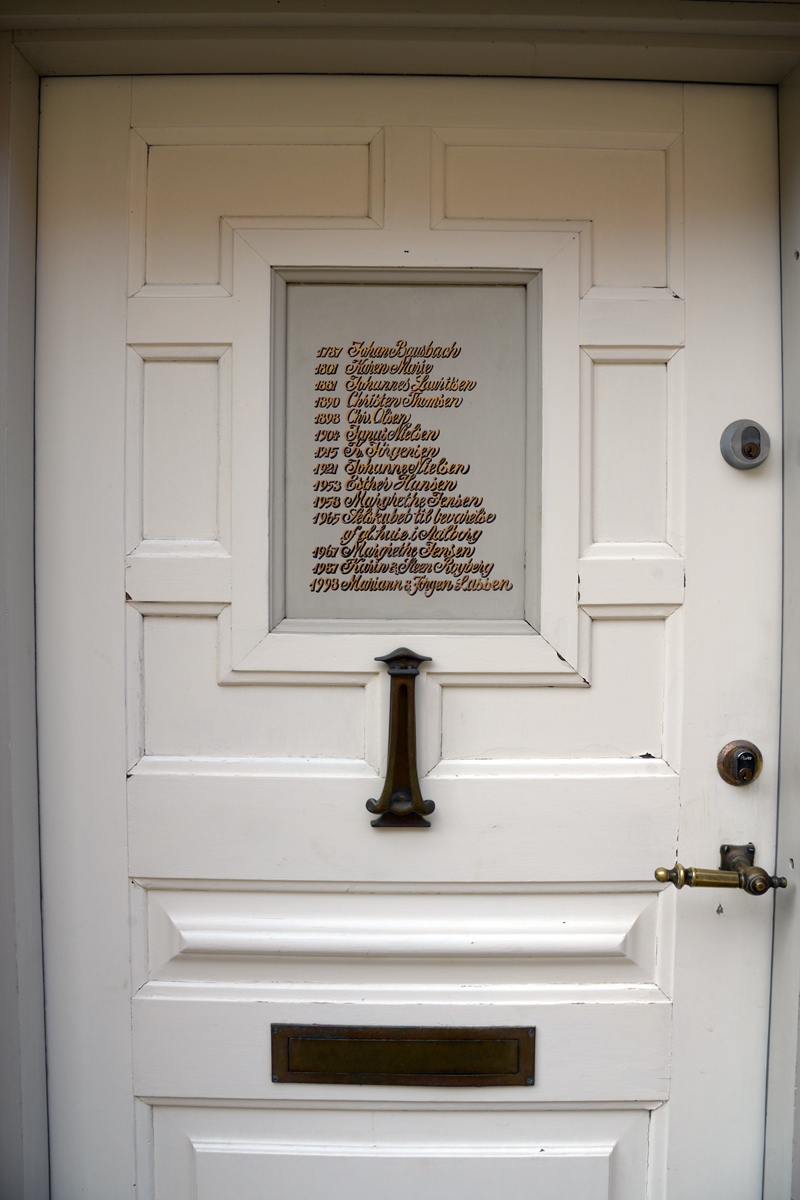
Aalborg is a city that became prosperous around the 1500s and 1600s. Many of the old buildings from this time have been renovated. I found this door on a walk in the inner city. The street name is «Hjelmerstald». "Helmet" means "horse", but it's an old word, not in use anymore. «Stald» means «stable» - horse stable. The name derives from that time the area was used for horse stables that belonged to the castle. But eventually houses were built for people too. This door has names engraved on it. These are the names of the people who have lived here from 1738 to 1998. This means that those who moved in in the year 1998 still lives here.

This door is located somewhere in the Drepung monastery, located approx. 8 km. outside Lhasa. It was once the world's largest monastery. It was partly destroyed by the Tsang kings and the Mongols. It also suffered some destruction during the Cultural Revolution, but much is still intact. The monastery was founded in 1416 and already one year after it was completed, it was inhabited by about 2000 monks. At the time the Chinese took over in 1951, approx. 10,000 monks here.

The city of Luang Prabang is a UNESCO Heritage Site, located by the Mekong River. It's not a large city, but it has the impressive number of 33 buddhist temples. Some of the larger temples have richly decoratet, golden doors. But I also took a lot of photos of old doors on private houses, like this wooden door found somewhere in one of the streets.
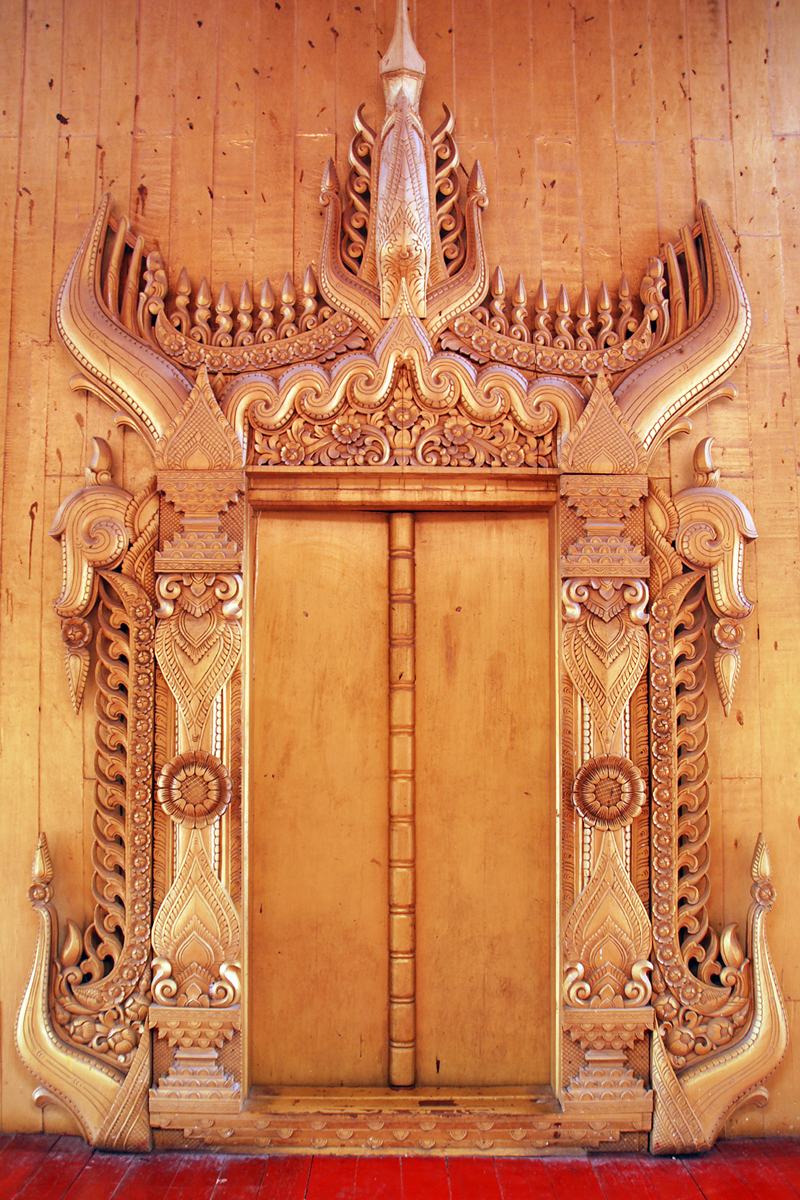
This door is found in Mandalay's Fort and Palace. The whole complex is surrounded by a moat and wall. What is left of the palace lies behind. Before 1885, the walls enclosed a gigantic royal city. The British deposed the king and destroyed parts of the city. During WWII (1945), the palace itself was burned down. What is left today is the central square which has been completely rebuilt. Despite the fact that it is a reconstruction, it's quite impressive.
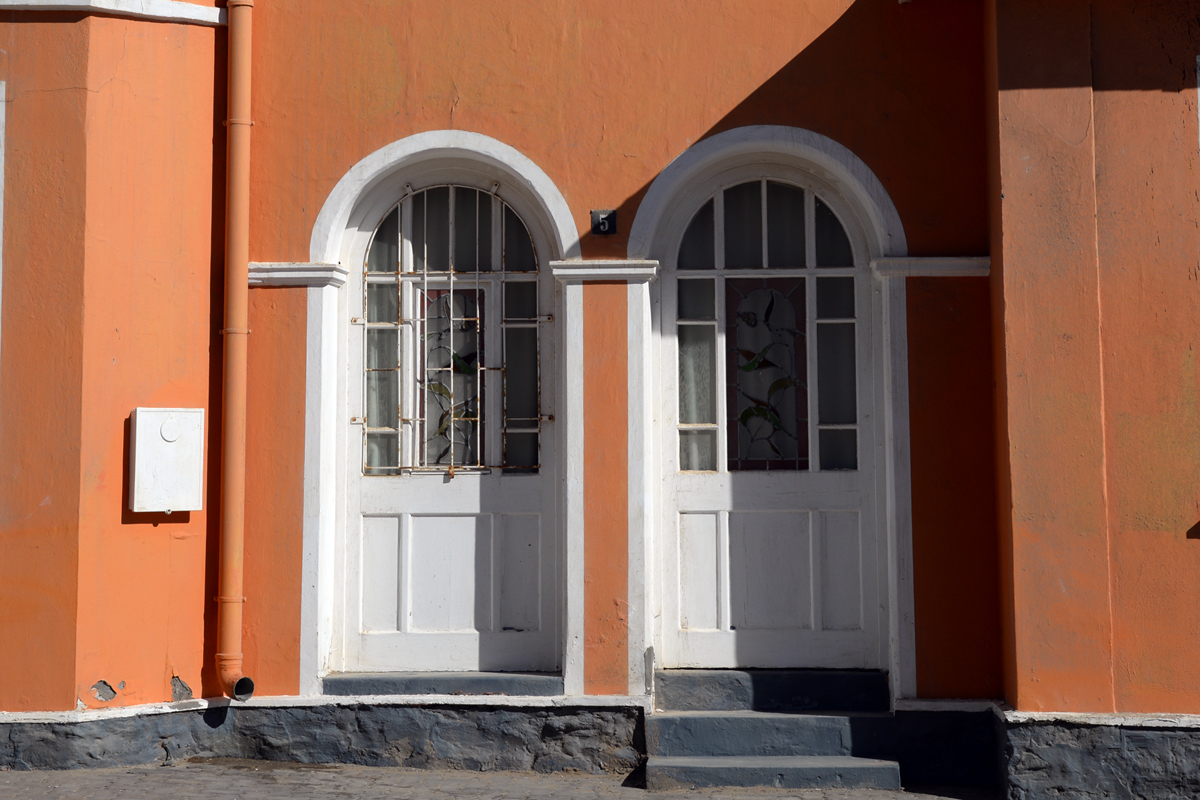
Lüderitz is situated by the Atlantic Ocean. Southern Namibia is dominated by the Sperrgebiet - forbidden area due to diamond mining. The town is small, but rich in buildings from German colonial times. Most street names and names on buildings are German. When you look at the houses, you really get a feeling of being in Germany, not an African country!
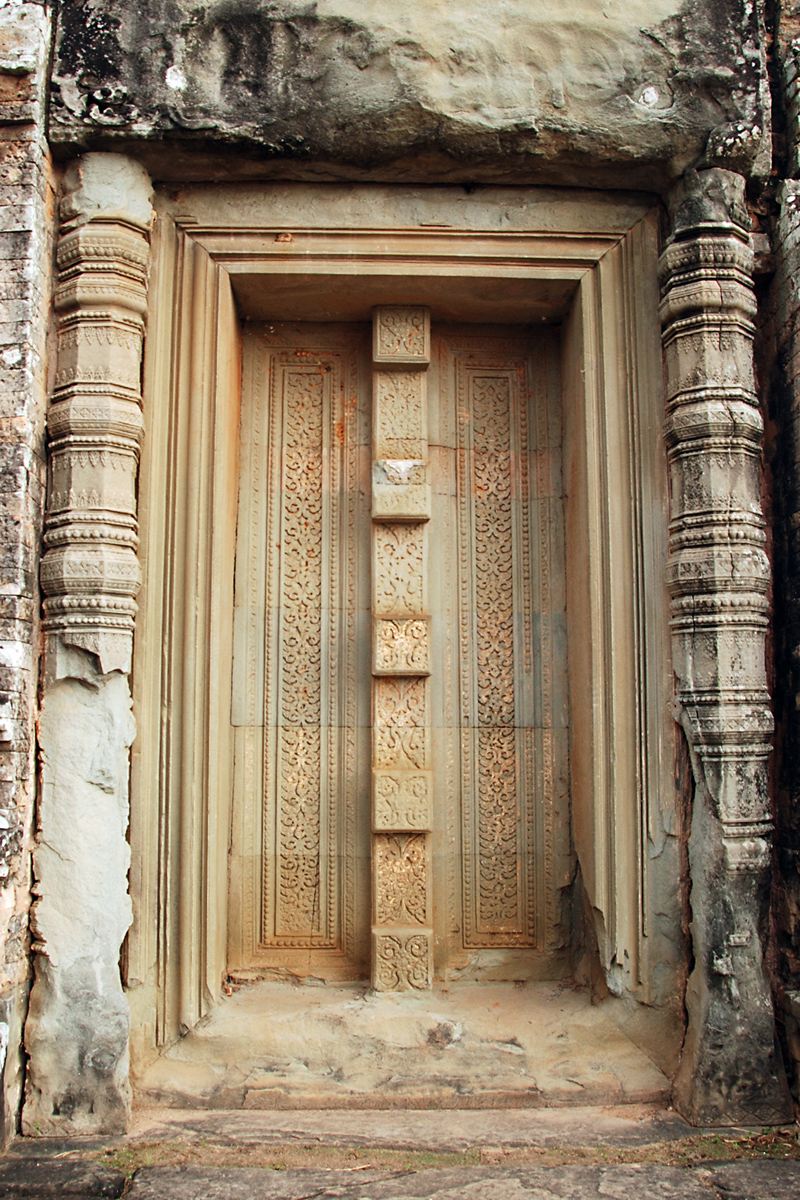
Pre Rup Temple is part of the Angkor complex in Siem Riep. It was built in 961/62 as a temple dedicated to Shiva. The name means "turning the body" and refers to a traditional method of cremation, which has led one to believe that it has functioned as a crematorium. Angkor was the capital of the ancient Khmer Empire that largely stretched across parts of Myanmar, Thailand, Laos and Vietnam in addition to present-day Cambodia. Angkor's heyday began with King Jayavarman II creating a center of power and allowing himself to be proclaimed "king of the world" in 802. The "door" is made of stone, but I am not sure whether it has been open once.
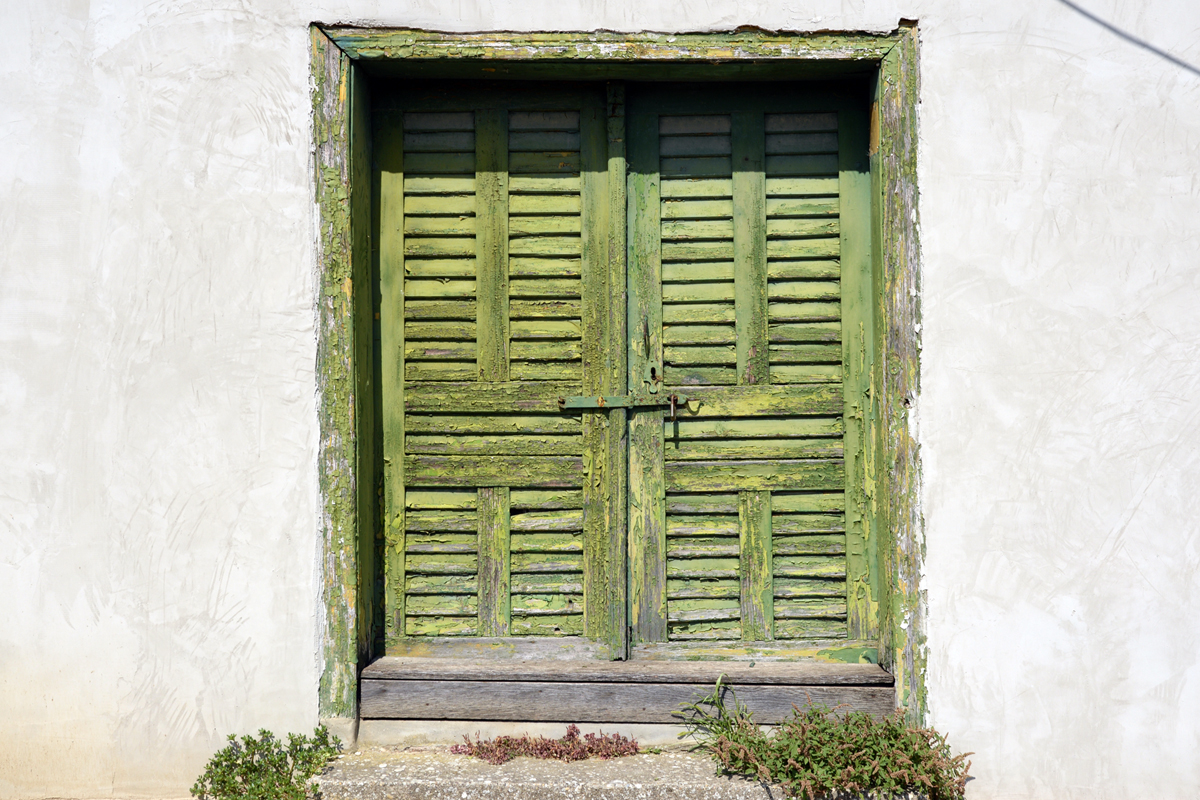
Villány is Hungary's southernmost wine region and one of the leading wine districts producing award-winning wines. From archaeologists we know that wine production has long traditions in Hungary. The Romans discovered 2000 years ago that Villány's wine was just as good as their own. This door was found here in Villány.
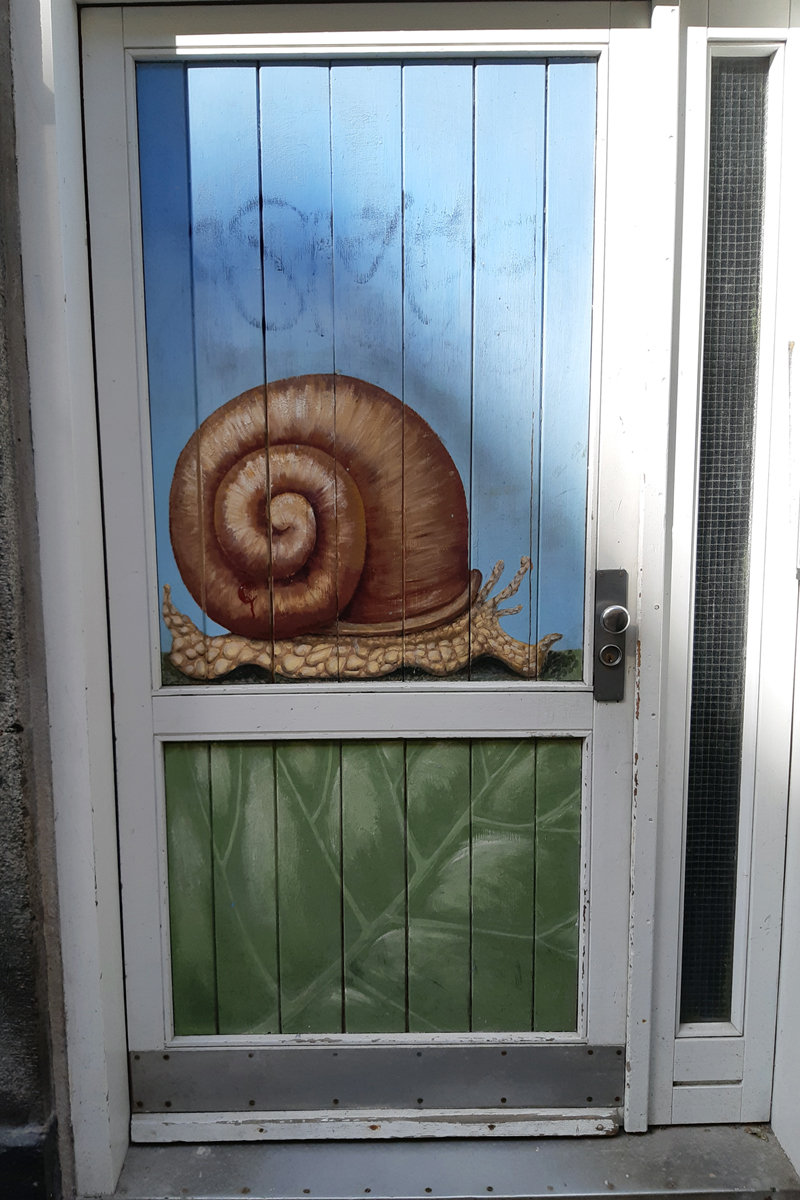
A very inviting door in the district of Vesterbro in Copenhagen. This district is located in the center of Copenhagen. During the 1800s butchers and merchants had established themselves in this part of the city (the western side). Later it became the entertainment area. That led to prostitution, crime and drugs. Today it is still known a the Red Light district. But the reputation has changed. When I walked through the area, I saw a district with ethnic restaurants, trendy cafees and shops. It is also one of the districts that has quite an amount of street art. Maybe that explaines this decorated door.
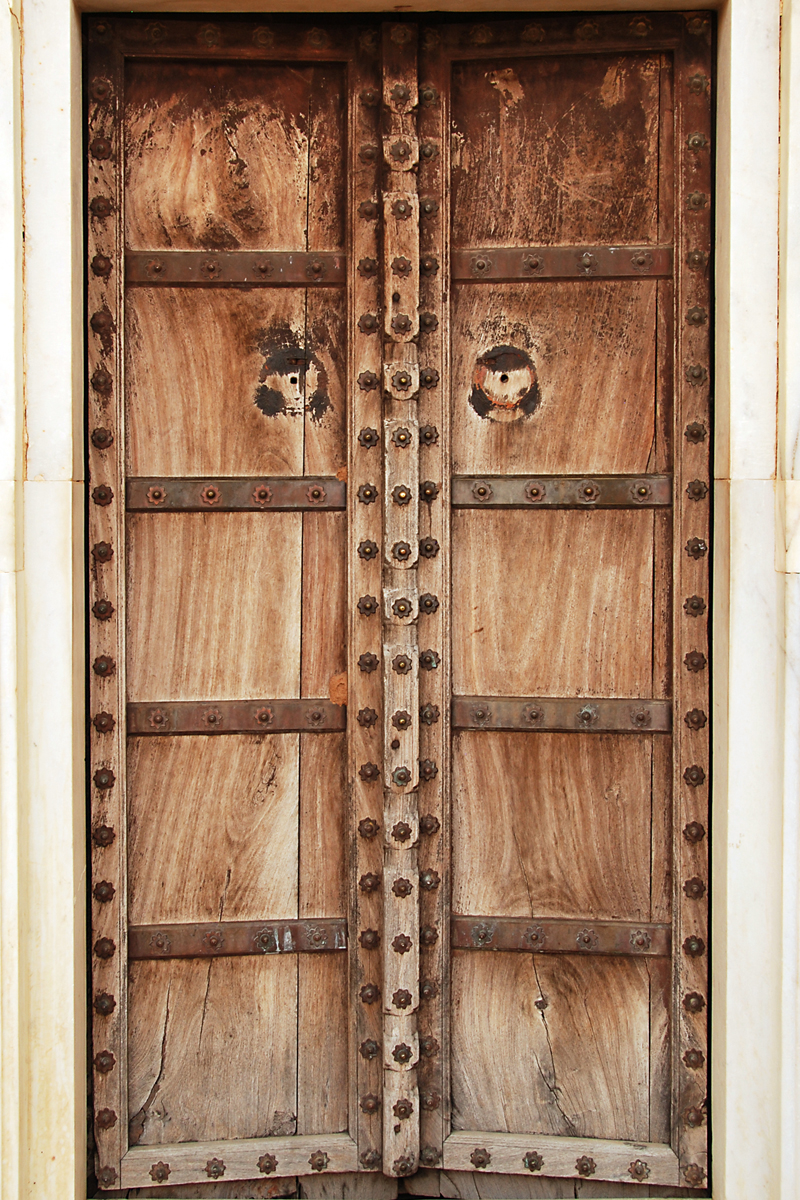
This door is one of many at Amber Fort, located not far from the city of Jaipur. In 1592 it was established and functioned as a fort until 1727. From then on, the capital was moved to Jaipur, but many of the subsequent rulers continued to come here. It is big. There is a lot to see, so here you should set aside plenty of time.

Another door from Jaipur. But this beautiful one is in the City Palace. There are many more beautiful doors at the palace. Jaipur was founded by Jai Singh II who ruled from the age of 11 (1688-1744). As the kingdom became richer, the old capital of Amber was replaced by Jaipur. It is a modern city, but at the same time also traditional.
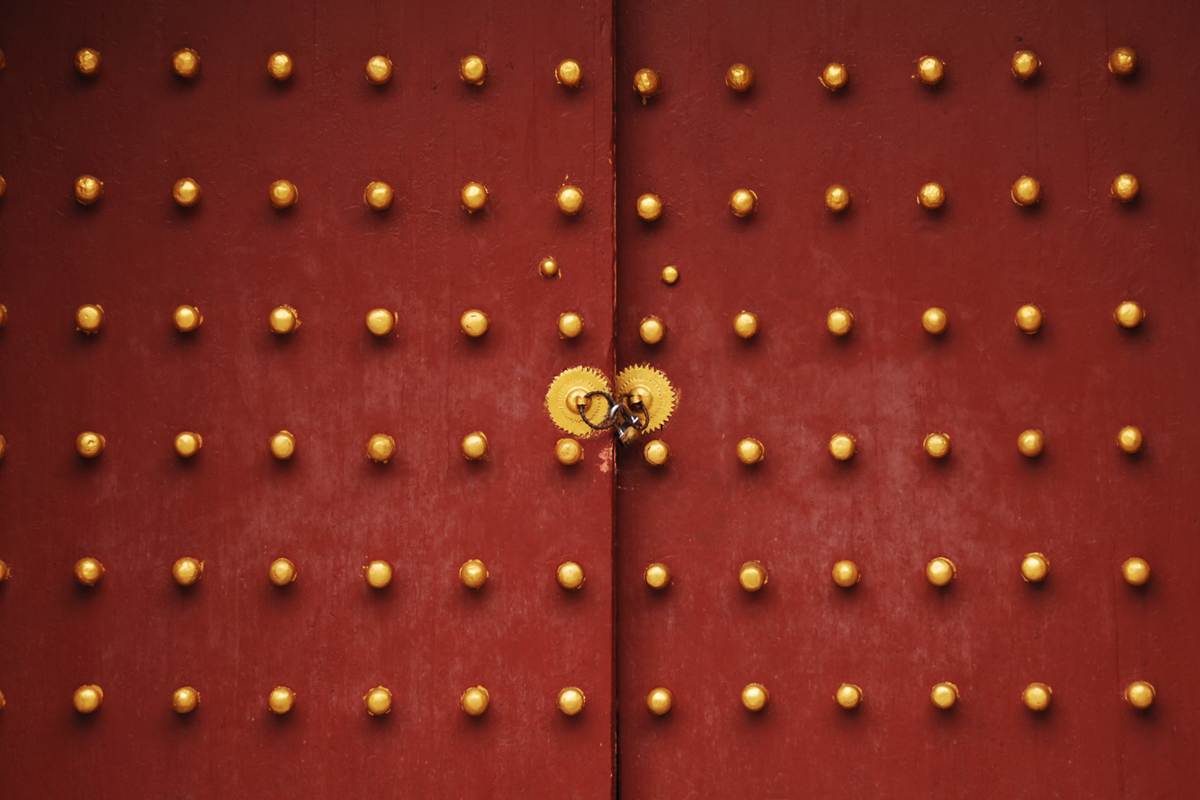
This is a close-up photo of a part of the double door that is the south gate to Guilin's old town. It is also the only one of the old gates that still exists. The city is located in southern China and is famous for its karst peaks surrounding the city. Guilin is often the starting point for a cruise on the Li River to Yangshou. A boat trip on the river is a highlight of any visit to this area. You will be enjoying beautiful landscape all the way.
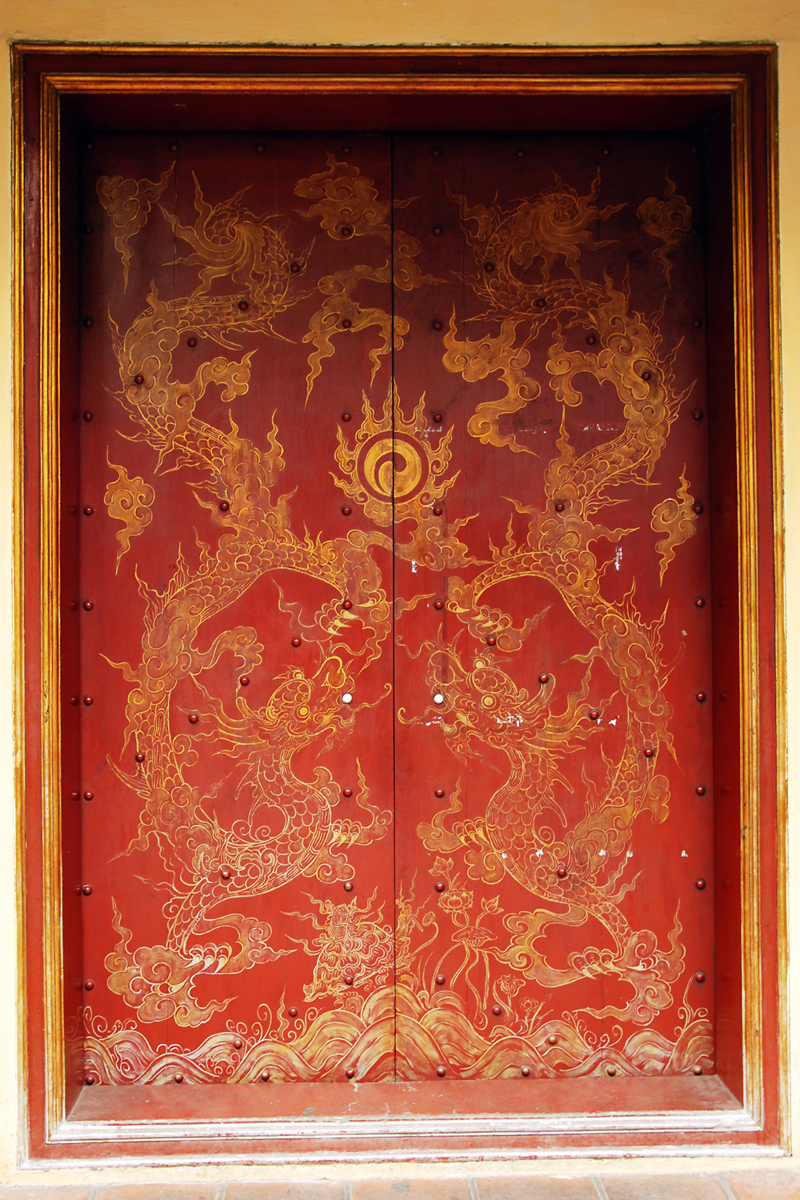
The Old Quarter in Hanoi is incredibly charming. Old houses, narrow streets and lots of mopeds. In this district there are several sights such as the Bach Ma Temple. This door belongs to this temple, which is a remarkable historical monument, built in the 9th century. A place of worship of the ancient god of Hanoi – Long Do. It is one of those temple that's worth a visit when in Hanoi.
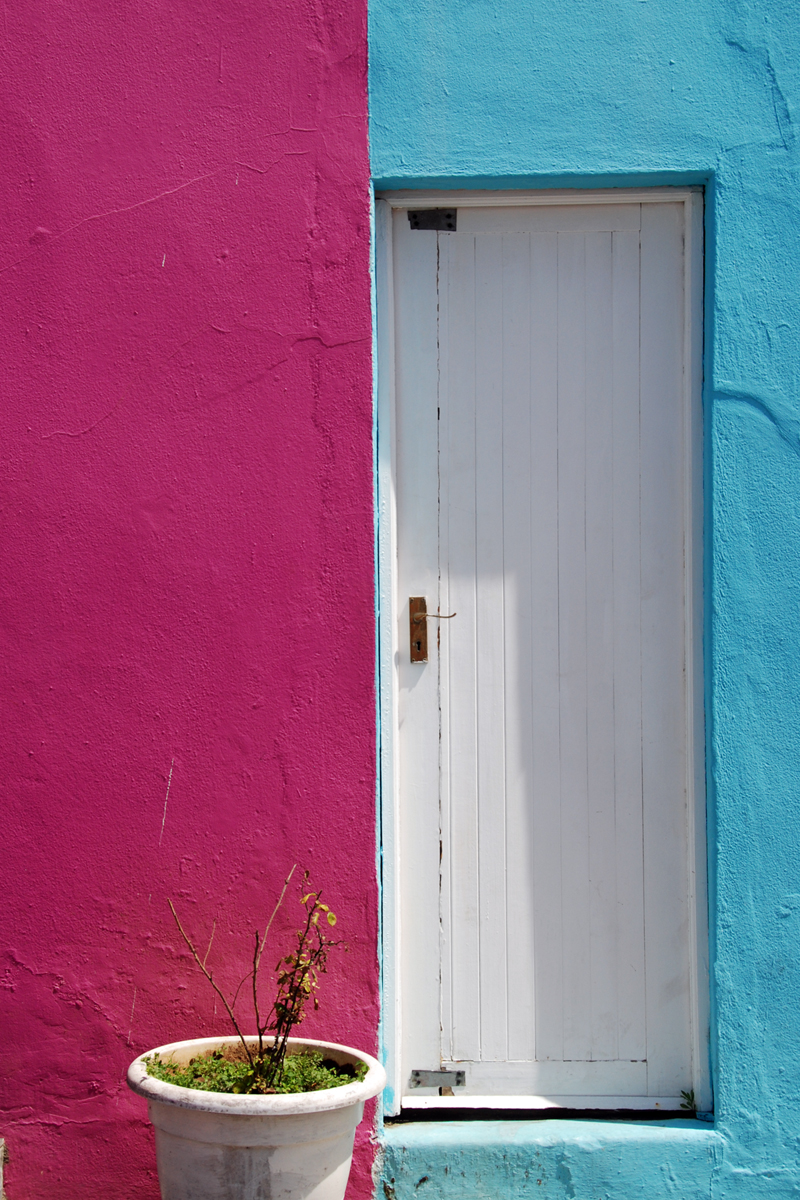
This white door is found in Cape Town, in the small district called Bo Kap. The houses are painted in strong colors. Yellow, turquoise, purple, pink, etc. Many of the houses are currently historical monuments. Originally, soldiers lived here, but after the slaves were released, they settled here from the 1830s. There are countless nice, well-kept houses. A real delight that shouldn't be missed.
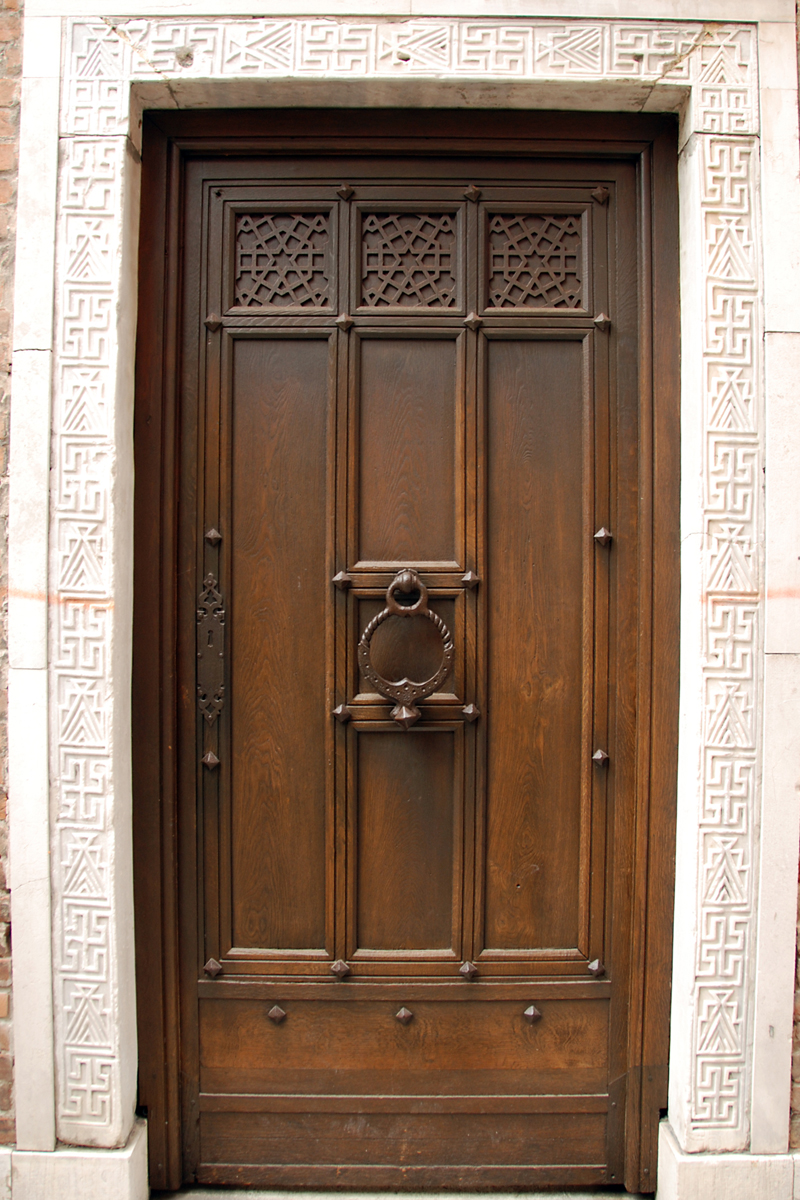
I no longer remember where I saw this door. But it's in Venice. Apart from walking a lot in the city center we went out to other areas to explore the narrow streets along the canals. The city's most beautiful buildings are located around St. Mark's Square, which is always full of people. It turned out to be a good idea to walk around places where people live. No roads and no cars makes Venice an absolutely a pleasant place to spend time. A good idea is to wander off to less touristy parts of the city.
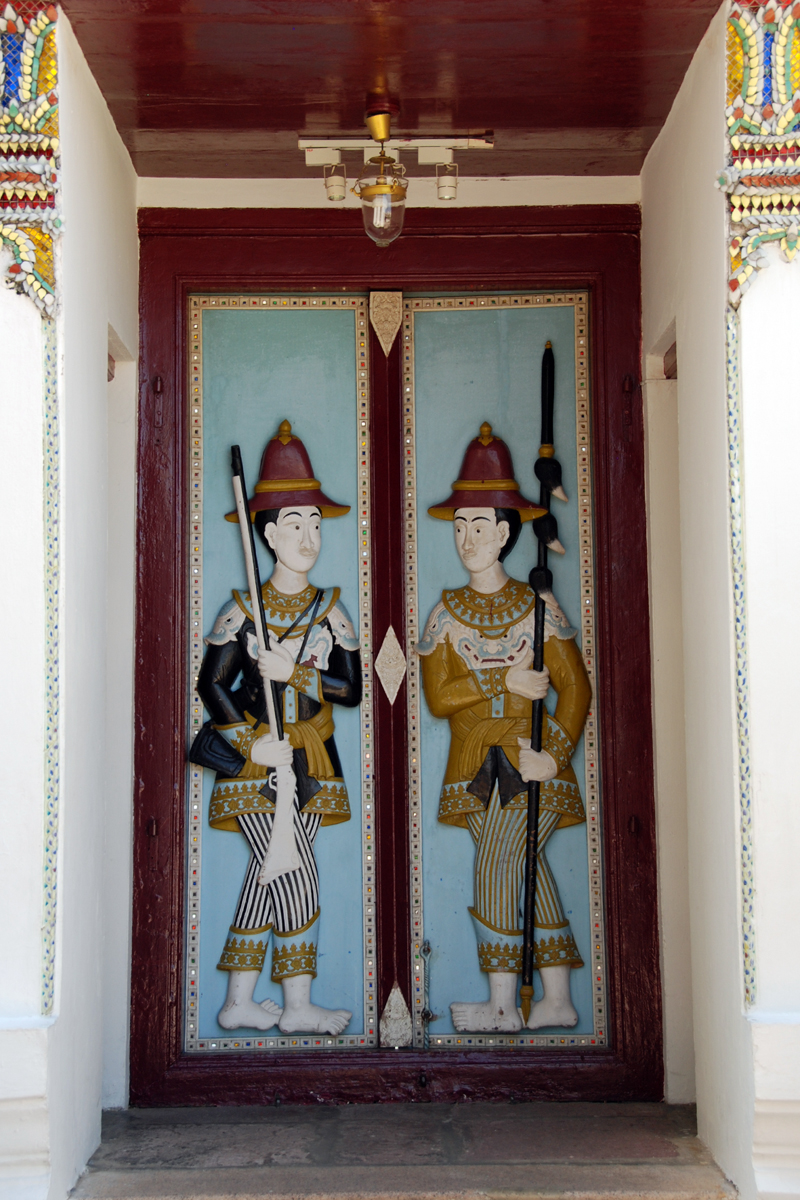
The Grand Palace has it's own way of decorated a door. Bangkok's Grand Palace and Wat Pho, are probably the city's main monuments and main attractions. This palace which has an almost 2 km. wall around it, was founded in 1782. It was once the king's residence. Still, it is one of my favourite places.
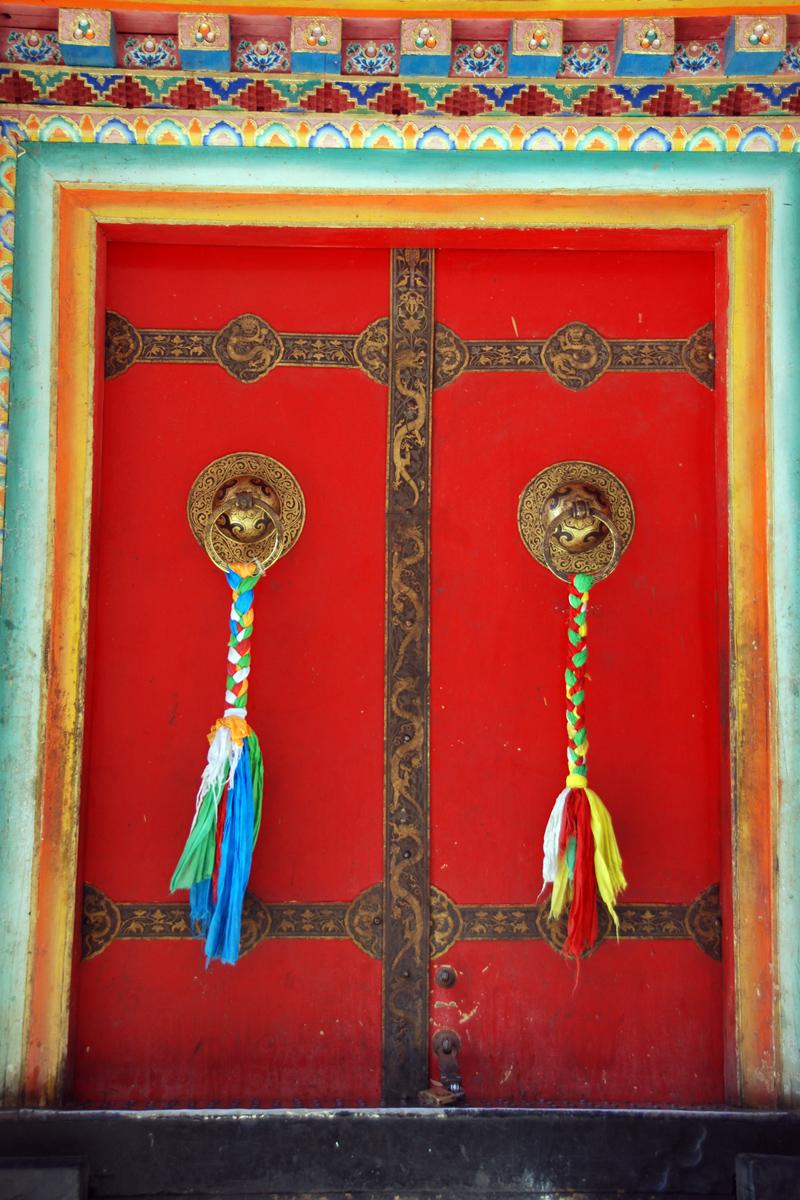
Tibet's second largest city is Shigatse is located at 3900m. In this city I visited the Tashilhunpo Monastery, in my opinion, one of the most impressive in Tibet. It was founded in 1447 and is one of the 6 large Gelugpa institutions. Most organized trips to Tibet will include a visit to this monastery.

A very old door that certainly has seen better times! Port Louis is the capital of this small island. The city is bustling with life on weekdays. Downtown and Chinatown still have many old buildings. This is where I found this door (among a large amount of others). I think one day these old buildings will disappear. There is some old charm about Chinatown and the oldest part of the city.

I found this door almost in the center of Salta. A fairly large city located in the northwest corner of Argentina, founded in the late 16th century. My hotel was situated downtown with walking distance to most places I wanted to visit. The city has lots of architecture from the colonial era. There are so many ornamented details to study on the beautiful buildings housing museums, the basilica etc.
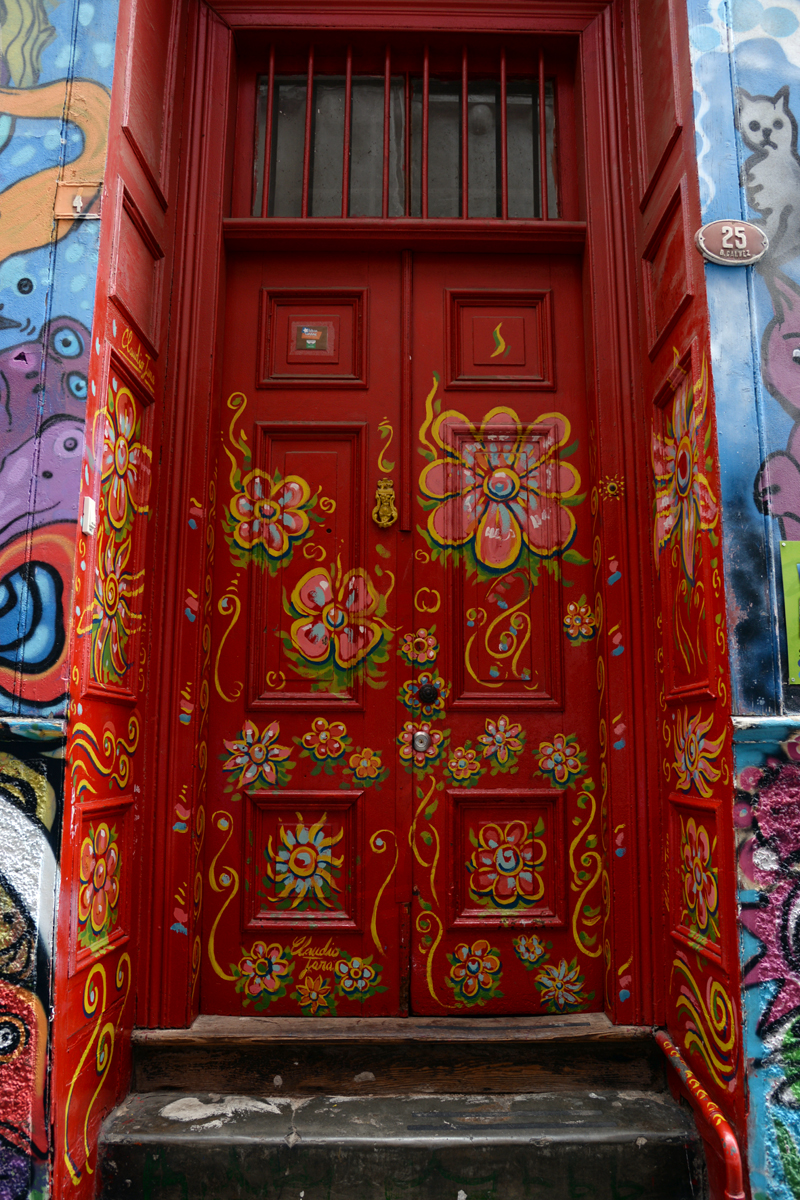
If you take your time in the historic part of the city of Valparaiso, you will see that there is street art absolutely everywhere! Not just on houses but stairs, benches, doors... I have never seen so much street art gathered in one place. It looks like every house and every street has art. This is just one of them. Valparaiso is situated on Chile's Pacific coast on hills - Alegre and Consepcion are two of these «hills» or areas where you will find so many examples of architecture from late 1800s. The reason for this is that they were mainly developed by English and German immigrants. Now the historic quarter is a UNESCO World Heritage site. Doors really do tell something about those who live there, or what the building is used for.
Please do follow if you want to keep up with my next photo shoot. Any upvotes or reblogs are hugely appreciated!
Latest photo shoot, check out :
MONOMAD - Walking the streets of Venice (4 photos)
U.J
Kristiansand, Norway
All the photoes are mine, Ulla Jensen (flickr, Instagram and facebook)
Latest content: Travel, Art, Article, Poetry

wow, what a great collection of door photos! the distinctive elements of each country are spectacular. Congratulations, I loved them!😍
Thanks :) It's quite amazing how different they are.
That is an interesting theme :)
Never thought of how many different doors exist. Wouldn't want to shop for new home door with you :)
Quite interesting to study doors. When I do, I always try to imaginge what kind of persons lives behind. A door does tell. Hehe...no, you definitly wouldn't want to go with me looking for a door..... that would take a long time :)
Thanks a lot for your support :)